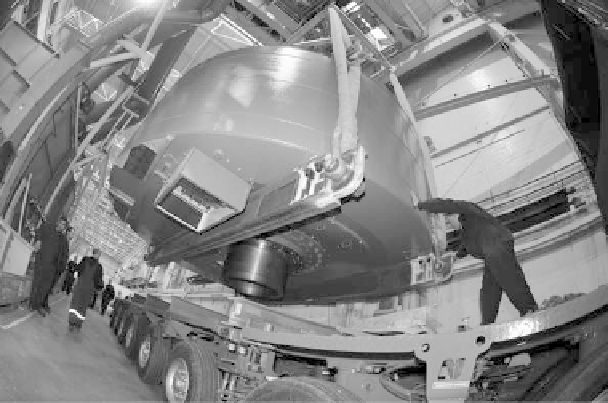Environmental Engineering Reference
In-Depth Information
Figure 2 : The 3.7 MW, 14 rpm PMG.
3 Superconducting rotating machines
3.1 Superconductivity
Superconductivity is a phenomenon where electricity is conducted with zero resis-
tance and zero loss, hence current in a loop of superconducting wire would con-
tinue forever. Superconductivity was discovered by H.K. Onnes in 1911 when he
cooled mercury below 4.2 K (the boiling point of liquid helium) [14]. Tempera-
tures in the fi elds of cryogenics and superconductivity are normally quoted using
the Kelvin absolute temperature scale, where absolute zero is 0 K =
273.16°C. As
temperature decreases the resistance of metals generally decreases. In the case of
non-superconducting metals such as copper, a residual resistance value is reached
and further temperature reduction does not result in and more reduction in resis-
tance. Superconducting materials, on the other hand, have a critical temperature
below which the resistance suddenly decreases to zero. When in the supercon-
ducting state the material has a critical current which increases as temperature
decreases, above which superconductivity ceases, and also a critical magnetic fi eld
above which superconductivity ceases. Hence, the current carrying capacity of a
superconductor is a function of temperature and magnetic fi eld strength. They also
exhibit a phenomenon, known as the Meissner effect, where all magnetic fl ux is
excluded from within the superconductor when in the superconducting state [15].
The earliest superconducting materials (known as Type I Superconductors) were
pure metals and had too low critical magnetic fi eld to be of practical use. Later,
another class of superconducting materials was discovered, consisting of metal
alloys and known as Type II Superconductors, which were able to tolerate much
higher magnetic fi elds. These materials allowed penetration of magnetic fl ux,
which was then trapped within them by a mechanism known as “fl ux pinning”.
−

Search WWH ::

Custom Search